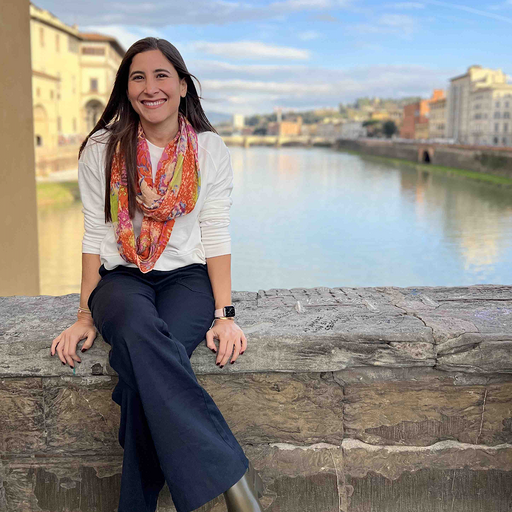A Brief History of Hearing Aids
Check out how hearing aids developed over time, what interesting shapes they took, and more in our insightful article. Click here to read more!

Have you ever wondered about the history of hearing aids and when the first breakthrough occurred?
Although early hearing aids have been around for a while, their evolution is nothing short of remarkable.
Early hearing aids evolved from inventions like the ear trumpet and the acoustic chair to current technologies offering seamless integration of advanced solutions into our daily lives.
Today, we can choose a hearing aid with anything from waterproof functionality to discrete designs and Bluetooth connectivity. A fascinating story of engineering, innovation, and interdisciplinary cooperation.
But before we fast-forward to the current state of hearing aid technology, let's rewind the clock and explore the origins and history of hearing aids, tracing their development over the decades.
When Was The First Hearing Aid Invented?
As with most things, technological advancements arise from necessity, and with nearly 20% of the global population living with hearing loss, there is a long history of the search to overcome this challenge, dating back to 1634 when the development of hearing aids began as an early response to the pressing need for improved auditory assistance.
1634: The Ear Trumpet was the first to be officially recognized as a hearing aid device.
The ear trumpet was a pioneering device in the history of hearing aids. This hollowed instrument directed sound waves towards the ear and was available in various forms, dimensions, and materials.
The small end of the horn would be placed inside the ear canal, and the larger end would collect sound and increase the volume for the user.

French priest and mathematician Jean Leurechon was the first to describe the ear trumpet in writing, and Johann Nepomuk Mälzel, a German inventor, manufactured ear trumpets in the 1810s. He even produced ear trumpets for composer Ludwig van Beethoven, who was starting to become deaf.
Other ingenious designs, like the acoustic chair, conveyed sound from the armrests to a hearing tube discreetly leading to the user’s ear.
They were available mostly for members of the royalty. Specifically, one was commissioned by craftsman Frederick Rein for King John VI of Portugal, Brazil, who was hard of hearing and needed a device to help him communicate better.

These inventions resulted from collaborative efforts, leading to other forms of early hearing aids, such as conversation tubes, autphones and dentaphones.

Even nowadays, a new and improved version of the conversation tube is available for only $39.95!

As the ear trumpet continued to evolve, improvements were made, and it eventually advanced into Binaural Ear Trumpets, with one for each ear.

1898 - The First Electric Hearing Aid, called the Akouphone, was developed by Miller Reese Hutchison.
The Akouphone was a portable carbon transmitter that turned weak signals into strong ones using an electric current. However, their ability to amplify sounds was limited for an individual with significant hearing loss.

By 1920, Earl Hanson patented the first vacuum-tube hearing aid named the Vactuphone.
This early hearing aid device used the telephone transmitter to convert speech into electrical signals, amplified through the receiver to up to 70 decibels, hitting the U.S. market in 1923. The downside was that they were bulky and difficult to carry around.
As the technology evolved, so did the competition. Transistor hearing aid devices emerged as smaller and more reliable. The body-worn transistor hearing aid became very common.

1956 - Behind the Ear (BTE) Hearing Aids.

The behind-the-ear hearing aid device emerged as an even more discrete instrument sitting behind the ear and connected to an earpiece. This hearing aid device was advertised as “tiny, feather-light, tinted, and contoured to fit snugly and comfortably right at the ear!”
1970 - In the Ear (ITE), Hearing Aids were later introduced as custom-molded to fit inside the ear.
Nowadays, these are the most discrete devices available, ensuring a perfect fit and a discreet look.
Entering the 1980s, digital technology improved, and by the mid-80s, Cochlear Implants were introduced.
A cochlear implant system helps process auditory signals through internal and external components. The internal system is surgically implanted inside the auditory system, while the external system is usually worn behind the ear.
Today, a cochlear implant can help restore hearing in people with severe to profound hearing loss and has been an approved treatment method since the mid-1980s.

1996 - The first commercially available 100% digital hearing aid
The Senso was the first commercially successful, fully digital hearing aid created by Widex in 1996. This device propelled an arms race for more advanced hearing aid devices.
2015 - “Made for iPhone hearing aids”
"Made-for-iPhone" (MFi) hearing aids were introduced by brands like ReSound and Starkey, enabling users to stream phone calls, music, and podcasts directly from iOS devices.
These new models not only improved the overall user experience but also fostered a more inclusive and connected digital world.

By 2018, Android launches compatible hearing aids
Google also took this step by pairing hearing aids with Android phones. Although the Android compatibility still relies on a Bluetooth streamer for hands-free calling, the milestone makes the technology available to even more people across multiple devices.
Fast forward to 2023

Bluetooth hearing aids have opened up a new world as they double as communication devices capable of placing phone calls, using popular apps, controlling digital assistants like Siri, and streaming audio.
Conclusion
As we witness the transformation of hearing aid devices from their humble, bulky beginnings to intelligent, adaptive companions, it becomes clear that the future is brighter and more inclusive. It's been an impressive ride, and with artificial intelligence, wireless connectivity, and sleek designs, we look forward to what's to come!





